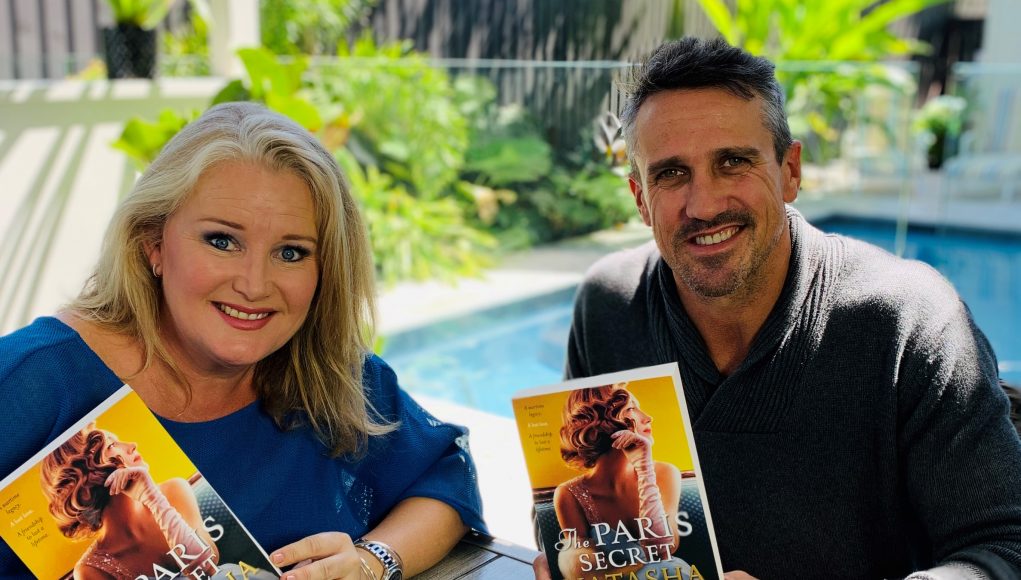Want to know more about The Paris Secret? Here is a quick Q&A with Natasha Lester…
Briefly tell us about your book
In The Paris Secret, my contemporary protagonist, Kat Jourdan, finds secret wardrobes full of sixty-five Christian Dior gowns hiding in her grandmother’s abandoned cottage in Cornwall. There’s a dress for every year dating back to the very first collection in 1947. Kat has no idea how her grandmother could have come by such an astonishing collection of haute couture – and nor does she know why her grandmother would keep it in a derelict cottage.
She decides to find out more. Her journey for answers takes her right back to Christian Dior’s first showing in Paris in 1947 and onto the life of his sister Catherine, who fought bravely for the Resistance during WWII and was deported to a concentration camp by the Nazis. That connection leads Kat to a group of female pilots who courageously delivered fighter planes for the RAF during the war and who are also, somehow, linked to her grandmother. The more Kat discovers, the less it seems she knows about her beloved grandmother. So Kat has to decide whether she should keep searching, or if it would be better to leave the past alone.
What inspired the idea behind this book?
I first heard of Catherine Dior when I was reading Anne Sebba’s wonderful book, Les Parisiennes: How the Women of Paris Lived, Loved, and Died Under Nazi Occupation. Sebba mentioned Catherine a few times, that she had worked with the French Resistance, and had been captured by the Nazis and deported to Ravensbrück concentration camp. Her work with the Resistance was so heroic and so important that, after the war, Catherine was awarded a Croix de guerre and the Légion d’honneur by the French, and the King’s Medal for Courage in the Cause of Freedom by the British.
The terrible injustice of what and who the world remembers struck me immediately: the man who once made dresses is so famous that most people, if asked to name a couturier, would mention Christian Dior. But his sister, who fought for freedom for her country and who nearly lost her life in that struggle, had been forgotten.
I embarked on a quest to find out more, a quest that uncovered very little concrete information about Catherine, who rarely spoke about her wartime experiences after the end of the hostilities. Still, I wanted to find whatever I could and that quest led me to write The Paris Secret.
What was the research process like for the book?
My research journey for The Paris Secret took me to Melbourne and Sydney in Australia, and to Paris and Granville in France.
An exhibition about the House of Dior in Melbourne, besides allowing me to revel in the beauty of the gowns, revealed very little about Catherine Dior, just that the perfume Miss Dior was named for Catherine. Christian had been unsure what to call his very first fragrance and then, one day in 1947, Catherine walked into a room while he was discussing that very problem. Someone said, ‘Ah, here is Miss Dior.’ And thus the perfume was named.
In Paris, I visited another exhibition of beautiful Dior gowns and, amidst the glamour, one small piece of paper caught my eye: a letter from Christian Dior to his father, advising the latter that Catherine had been liberated from Ravensbrück concentration camp. The letter was dated April 1945 – but what had happened to Catherine in the preceding years, both at the camp and while she was working with the Resistance, and what had happened to her afterwards?
Seeking answers, I went to Granville in Normandy, France. Villa Les Rhumbs, the ex-Dior family home, sits perched atop a cliff there and is now a museum dedicated to the Diors. Here I saw several photographs of Catherine, read a little about her life in the house as a child, and saw what was once her bedroom. But there still remained a huge gap of time between child-Catherine and hero-Catherine, the woman who, against all odds, left Ravensbrück with her life.
That gap has not yet been filled extensively by any writer or archive, but there is, thankfully, a biography of Catherine scheduled to be published in fall 2020. In the meantime, I had to use much imagination and some fabrication to work Catherine into my story because I desperately wanted people to know about this other, arguably more important, Dior sibling
What are you hoping the reader will take away from reading your book?
That there are so many courageous women in the past who have been forgotten by history and that it’s up to all of us to ensure that it doesn’t happen anymore: that the female heroes of today are celebrated and remembered by everyone, as they deserve to be.
What’s the easiest and most difficult parts of your job as a writer?
On some days the writing is the easiest part of the job – it’s actually a lot of fun to escape into the past, especially when there are beautiful dresses to look at and when travel to Paris is involved! On other days, the days when the self-doubt kicks in and you think everything you’ve written is terrible, the writing becomes the hardest part of the job. It’s on those days that you find out if you’re truly a writer. If you sit down and write in spite of the difficulties, then you know you really are, and that you and your book will make it through anything and everything together.
Interview supplied by QBD Books.











